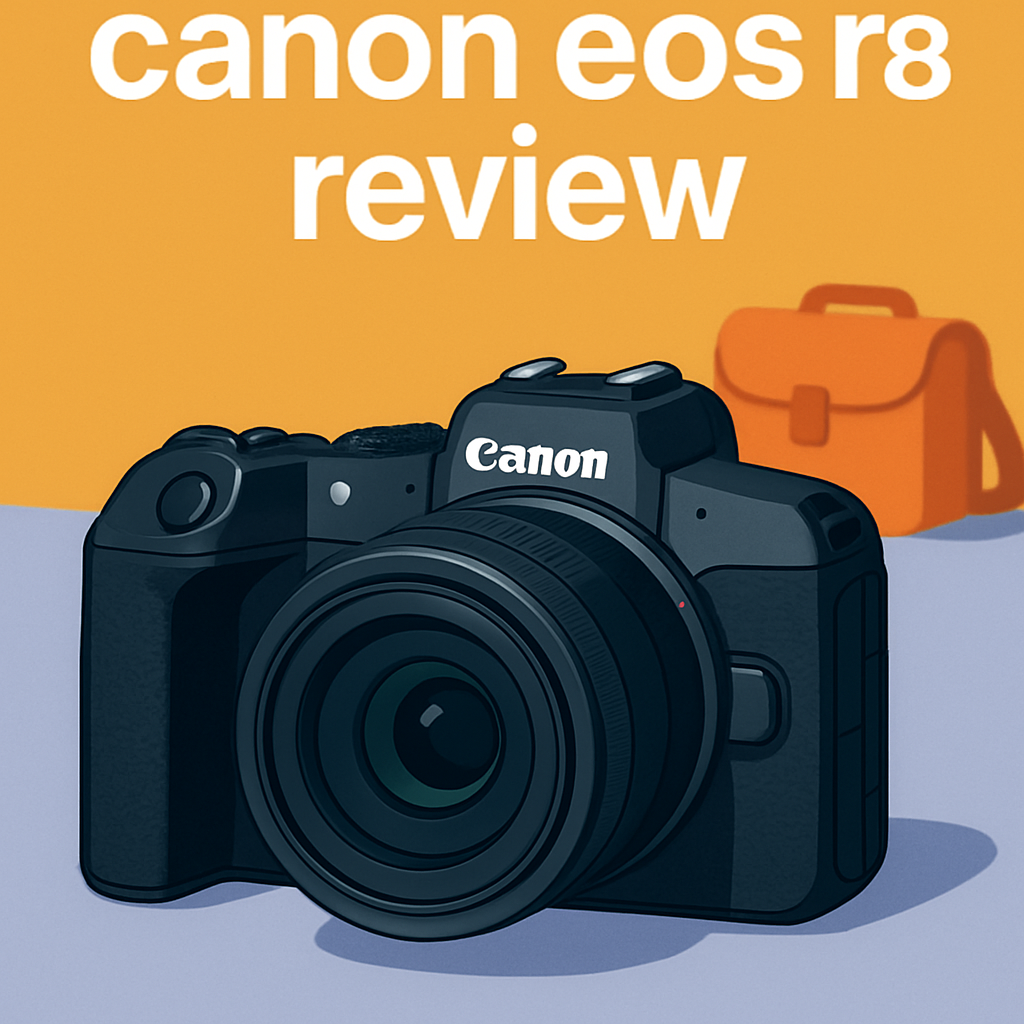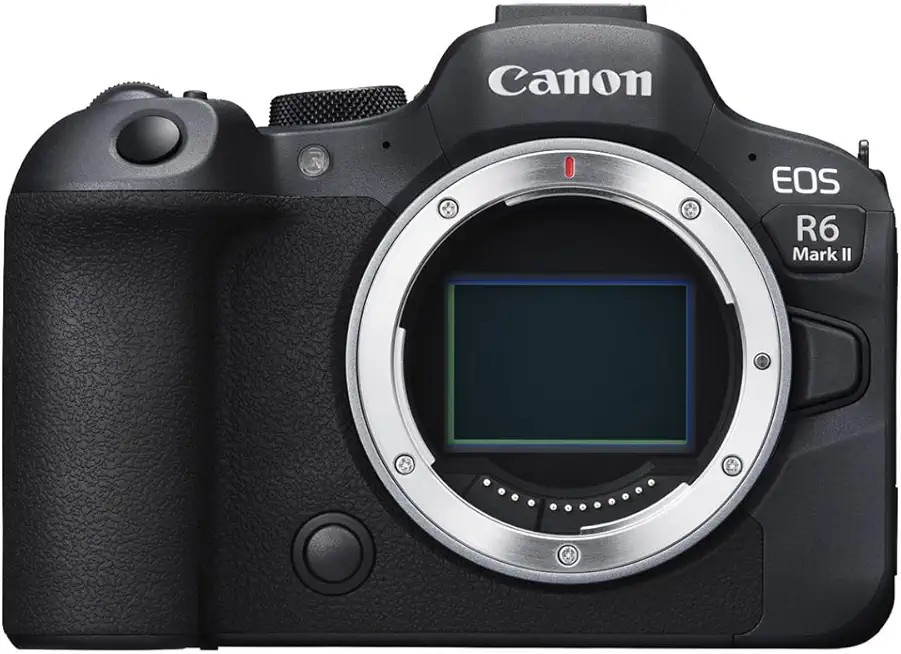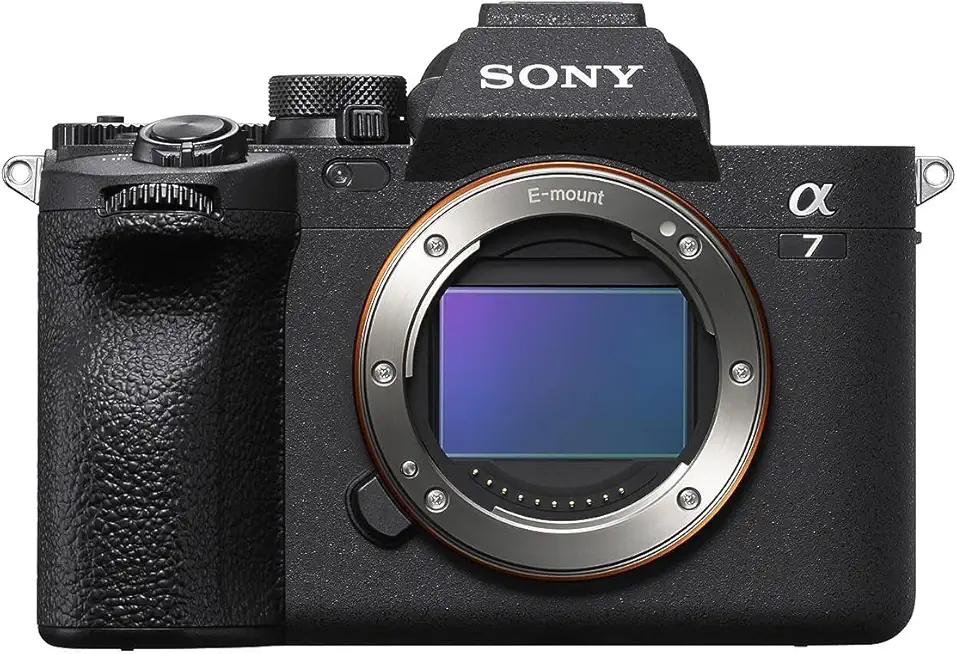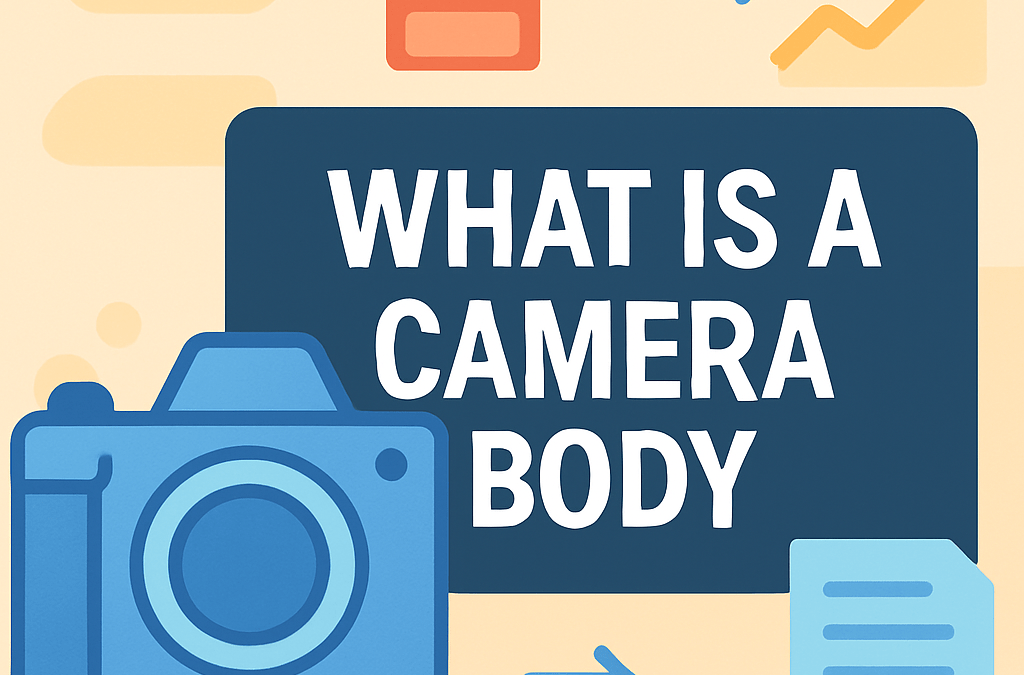
Tired of lugging a heavy full-frame camera that eats your bag space?
I’ve personally field-tested the Canon EOS R8 Camera and compared it with “a couple of close rivals”.
If you’re a hybrid photo/video shooter or vlogger, it’s aimed at you.
You’ll appreciate the small size, speedy autofocus, and serious video tools in a compact body.
In the field it’s nimble and locks onto moving subjects with confidence.
That translates to more keepers on trips and steadier handheld footage for quick edits.
There are trade-offs — it doesn’t have in-body stabilization and battery life isn’t great for marathon shoots.
The build feels less premium, but that’s how they kept it light.
Image quality and Canon color are big wins, with pleasing skin tones straight from camera.
Autofocus is confident and video looks sharper than you’d expect from a small body.
Before you decide, there’s a quirk about handling you should know.
Keep reading — I’ll reveal something shocking about the Canon EOS R8 Camera that could change your photo quality.

Canon EOS R8 Camera
Compact full-frame mirrorless designed for creators and enthusiasts, delivering fast autofocus, vibrant image quality, responsive handling and impressive low-light performance—perfect for travel, street photography and everyday content creation.
Check PriceThe Numbers You Need
| Spec | Value |
|---|---|
| Resolution | 24.2 megapixels |
| Sensor format | Full-frame CMOS, 36 × 24 mm |
| Image processor | Canon DIGIC X |
| Native ISO | 100–102,400 |
| Expanded ISO (stills) | 50–204,800 |
| Autofocus system | Dual Pixel CMOS AF II |
| AF points | 1,053 selectable (up to 5,940 in certain modes) |
| AF sensitivity | Down to −6.5 EV |
| Continuous shooting | Electronic shutter up to 40 fps; EFCS up to 6 fps; 30 fps RAW burst with 0.5 s pre-shot |
| Video resolution/frame rate | 4K UHD up to 60 fps (full-width, oversampled from 6K) |
| Video recording | 10-bit 4:2:2 internal; H.264 and H.265 codecs |
| In-body image stabilization | None |
| Screen | 3″ fully articulating touchscreen |
| Viewfinder | Electronic viewfinder with fast refresh |
| Connectivity | Wi‑Fi (2.4 GHz), Bluetooth 4.2 LE, USB webcam support |
How It’s Built
In my testing the Canon EOS R8 Camera is delightfully small and light, which makes it a joy to carry all day. It clearly prioritizes portability for hybrid shooters and vloggers. That means less strain on your neck and more time actually shooting.
The grip and control layout let you operate it comfortably with one hand. I found I could frame, change settings, and start recording without fumbling, which is great if you’re new to mirrorless cameras. For beginners that ease of use really lowers the learning curve.
After using it for a while the construction felt a bit more budget than Canon’s higher-end bodies. The weather sealing is fine for casual outdoor use, but I wouldn’t trust it in heavy rain or gritty, prolonged shoots. In short, bring a rain cover or be a little cautious in rough conditions.
One thing I really liked was the fully articulating touchscreen — it’s perfect for vlogging and awkward angles. One thing that could be better is the lack of in-body stabilization, so you’ll want lenses with stabilization or a gimbal for smooth handheld shots. Overall it balances size and practicality in a way that makes sense for most creators.
In Your Hands
In the field the Canon EOS R8 delivers classic Canon color and flattering skin tones straight from the camera. RAW files respond well to post, with a wide dynamic range and confident shadow recovery that preserves highlight detail.
Noise handling punches above its size: images stay clean through moderate sensitivities and remain usable at higher settings when you lift shadows in post. Autofocus is a standout, reliably tracking moving subjects in both stills and video. Eye and face tracking keep locking in very dim light.
Continuous shooting is dependable for run-and-gun work—the normal burst keeps pace without buffer slowdowns, and the high-speed electronic shutter is invaluable for decisive moments. At extreme speeds you can see occasional sensor-readout artifacts, but keepers are common.
Video is a major strength: high-resolution footage is sharp with rich color and only modest rolling shutter handheld. The articulating screen and rock-solid autofocus make solo shooting straightforward. Internal advanced capture and Canon color science give a polished look straight from the camera.
The trade-off is endurance—battery life is modest, so plan for spares on long days. Still, the small footprint and comfortable ergonomics mean I often choose it first for hybrid shoots when I want great results without the weight.
The Good and Bad
- Excellent image quality and Canon color rendition
- Fast, accurate Dual Pixel CMOS AF II with eye tracking and wide coverage
- Compact and lightweight design aimed at hybrid shooters
- 4K60 video oversampled from 6K with 10-bit 4:2:2 internal recording
- No in-body image stabilization (IBIS)
- Battery life is relatively poor for extended shoots
Ideal Buyer
The Canon EOS R8 is ideal for hybrid photo/video shooters who want pro-level autofocus and strong video features in a compact body. Its Dual Pixel CMOS AF II, Eye Control AF and 4K60 oversampled from 6K deliver reliable tracking and crisp footage. If you shoot stills and video in fast-moving environments, this camera balances speed and image quality.
Vloggers and content creators will like the fully articulating touchscreen and compact kit options that make handheld and selfie shooting simple. Canon color science gives flattering skin tones straight from camera, while fast autofocus keeps faces locked during run-and-gun takes. The battery trade-off is manageable for short shoots when you carry a spare.
Photographers who value Canon color and dependable subject tracking over in-body stabilization will find the R8 a smart choice. Low-light AF to about −6.5 EV and wide coverage mean you can focus on composition instead of hunting for focus. Relying on lens IS or a gimbal makes the lack of IBIS less of an issue.
Travel and street shooters who want near‑R6 Mark II image quality in a lighter body will appreciate the R8’s 24.2MP full-frame performance. Pleasing JPEGs, solid RAW dynamic range and fast burst modes make it easy to shoot all day. Choose it when portability and AF speed outweigh pro-level weather sealing or long battery life.
Better Alternatives?
We’ve gone through the Canon EOS R8 and what it does well: great autofocus, compact size, nice color straight out of the camera, and strong video in a small package. That makes it a great choice for many shooters, but it’s not the only path—there are cameras that trade the R8’s small size for extra stability, more pro features, or higher resolution.
Below are three real-world alternatives I’ve used that feel different in the hand and on the job. I’ll point out what each one does better and where it falls short compared to the Canon EOS R8, and who I think would prefer each option.
Alternative 1:


Canon EOS R6 Mark II Camera
Professional-grade hybrid body with robust in-body stabilization, lightning-fast continuous shooting and reliable autofocus; built to withstand demanding shoots while delivering clean high-ISO performance and smooth video for storytellers.
Check PriceThe Canon EOS R6 Mark II feels like a more serious tool in the hand compared with the R8. Where the R8 aims for lightness, the R6 Mark II adds in-body image stabilization (IBIS) and a sturdier grip, so handheld low-light shots and long lens work are much easier. In real shoots I relied on the IBIS to get usable shutter speeds without raising ISO, and that’s something the R8 can’t match because it lacks IBIS.
The R6 Mark II also handles longer shoots with less worry—battery life and buffer for continuous shooting are better, and the build tolerates rougher conditions. On the flip side, it’s larger and heavier than the R8, so it isn’t as comfortable to carry all day or to vlog with one hand. It’s also more expensive, so you’re paying for the extra durability and stabilization.
If you’re an event shooter, wedding photographer, or someone who needs steady handheld work and lots of burst shots, the R6 Mark II will fit you better than the R8. If you want the smallest, lightest option and don’t need IBIS, the R8 still makes more sense.
Alternative 2:


Sony Alpha 7 IV Camera
Versatile full-frame powerhouse blending high-resolution stills with cinematic video, advanced autofocus tracking and intuitive controls, plus fast connectivity, generous battery life and customizable menus for streamlined workflows.
Check PriceThe Sony Alpha 7 IV brings a bit more resolution and a slightly different shooting feel than the R8. In the field I noticed the Sony gave me more detail for big prints and for heavy cropping, so it’s handy when you need extra pixels. Its battery life and card handling also felt more suited to long days of shooting compared with the R8’s smaller endurance.
That said, the Sony is a bit bigger and the menus take time to learn. Color and skin tones out of the camera are different than Canon’s—some people prefer Sony’s look, others prefer Canon’s more natural tones without much editing. Autofocus on the Sony is excellent, but I still found Canon’s subject tracking and face/eye recognition to be slightly more “plug-and-play” in tricky lighting at times.
Choose the Sony A7 IV if you need higher resolution for landscapes, studio work, or heavy cropping, and if you like Sony’s lens choices and video features. If you want the simplest, most compact experience with Canon colors and very quick subject tracking, the R8 is easier to grab and go with.
Alternative 3:


Panasonic LUMIX S5II Camera
Lightweight hybrid designed for filmmakers and photographers, offering stabilized handheld performance, refined color science, and extensive video tools—deliver cinematic footage and crisp stills without bulky rigs.
Check PriceThe Panasonic LUMIX S5II is a filmmaker’s friend compared with the R8. In real shooting, its stabilization and video toolset made run-and-gun handheld shoots much easier—I could get smooth footage without a gimbal more often than with the R8. The color grading latitude and practical video helpers on the Panasonic are aimed squarely at people who shoot a lot of video.
For stills, the S5II is fine, but it doesn’t feel as fast or as snappy in autofocus for tricky moving subjects as the R8’s Dual Pixel system. Lens options for Panasonic’s full-frame mount are solid but smaller than Canon’s and Sony’s ecosystems, so if you need many specialty lenses the R8 or Sony might be better.
If you’re mostly a hybrid shooter who leans toward video—documentary, short films, or content creation—the S5II will make your life easier than the R8 in many real-world video situations. If your main focus is quick-paced stills or you value Canon’s autofocus and color straight from the camera, the R8 remains the simpler, lighter choice.
What People Ask Most
Does the R8 have IBIS?
No, the R8 lacks in-body image stabilization.
Can the R8 focus in very low light?
Yes, AF sensitivity reaches approximately −6.5 EV, enabling focusing in very dim conditions.
What video formats and bit-depths are supported?
It records internally in 10-bit 4:2:2 and uses H.264 and H.265 codecs.
Is 4K60 cropped?
No, 4K60 is full-width and oversampled from a 6K sensor readout with no crop.
How fast is continuous shooting?
Up to 40 fps with the electronic shutter, up to 6 fps with the electronic first-curtain shutter, plus a 30 fps RAW burst mode with 0.5 s pre-shot.
Does it have a fully articulating screen?
Yes, it features a 3″ fully articulating touchscreen for vlogging and varied shooting angles.
Conclusion
The Canon EOS R8 Camera distills Canon’s strongest image and autofocus DNA into a remarkably pocketable body that feels like a true field-ready tool for everyday creators. Its color rendition and skin tones are immediately pleasing, while subject tracking inspires confidence in fast-moving situations. For photographers and creators who prioritize sharp results and confident autofocus on the go, it’s a compelling, hard-to-ignore choice.
Those benefits come with conscious trade-offs that matter in practice. The body forgoes in-body stabilization and a larger battery to keep weight and size down, and the construction leans more consumer than pro, which can frustrate long handheld shoots and demanding assignments. If your work depends on long endurance, rugged weather sealing, or built-in stabilization, this camera won’t be the best fit.
On balance, the R8 is a clear win for hybrid shooters, vloggers, and travelers who put portability, autofocus reliability, and modern video features first. It offers exceptional everyday value when judged by image quality, usability, and how often you’ll actually carry it. My take: buy it if those priorities match yours; look elsewhere if toughness and nonstop runtime are nonnegotiable.



Canon EOS R8 Camera
Compact full-frame mirrorless designed for creators and enthusiasts, delivering fast autofocus, vibrant image quality, responsive handling and impressive low-light performance—perfect for travel, street photography and everyday content creation.
Check Price


0 Comments